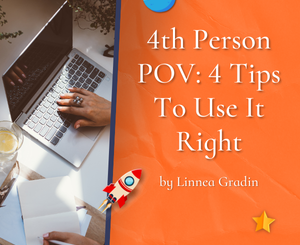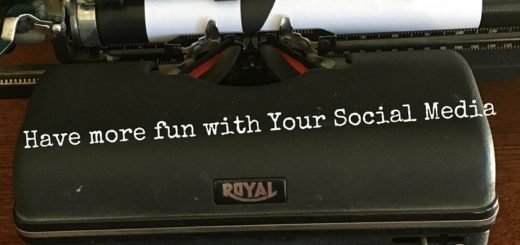Enrich Your Story with Foreshadowing by Kay Keppler
 Let’s welcome back monthly columnist, editor and novelist Kay Keppler, as she shares with us about “How Do You Feel?.” Enjoy!
Let’s welcome back monthly columnist, editor and novelist Kay Keppler, as she shares with us about “How Do You Feel?.” Enjoy!
***
The goal for every writer has to be writing a book so compelling that readers can’t put it down. Using foreshadowing can help you create that kind of suspense, because it hints at what comes later and motivates the reader to find out what that drama or secret is. Foreshadowing can also convey information that helps readers understand future events.
Foreshadowing is more of a narrative element than a literary device because of its importance to storytelling. Foreshadowing can be subtle, like the description of storm clouds on the horizon suggesting that danger is coming, or more direct, such as Romeo and Juliet talking about wanting to die rather than live without each other.
How to Create Foreshadowing
Foreshadowing is best done in a second or later draft, after you know your themes and climax. Some ways to try foreshadowing include:
1. Write a “pre-scene”
A pre-scene is a smaller version of a larger scene to come. If you write an event that fizzles out before anything dramatic happens, readers know that the drama will come later in the story.
For example, say you’re writing a western. The hero enters the saloon, orders a whiskey, and departs. Over in the corner, the villain spits on the floor. Everyone knows that by the end, these two will have a showdown.
2. Name an Approaching Event
Simply telling readers what’s on the horizon and why it’s important alerts readers that something big is on the way.
3. Use Irrational Concern
Show one character’s worry. In fiction, if a character worries, the reader expects that these worries are valid. You can use that worry to play out the expected drama—or subvert it by creating a different, surprising outcome.
4. Use Narrator Statement
If your book is written with a third person omniscient point of view, your narrator can tell readers that trouble is brewing. This method isn’t subtle and doesn’t work for first-person or third-person limited viewpoints. For example: “When John woke that morning, long before the sun came up, he had no idea that by nightfall he’d be suspected of murder.”
5. Place—or Omit—an Object
If an object is used later in your novel, show it to readers early on so they understand that it’s important. Chekhov famously said that if you wrote in a gun in Act 1, it needs to go off by Act 3. Of course, the object doesn’t need to be a gun—it could be anything. It could even be the absence of something. Did a character reach for the gun, but it wasn’t in the drawer where he expected it to be?
6. Demonstrate a Skill or Talent
Show that your character can do something that others can’t. Readers will expect and anticipate that she’ll use that skill later to move the plot. Think of Charlaine Harris’s Sookie Stackhouse character. In the opening pages, Sookie, a telepath, notices that she can’t hear the vampire’s thoughts when the bar’s occupants overwhelm her brain. Later, both these facts play important roles in the story.
7. Accentuate Behavior
Help your readers to suspend their disbelief. Reveal early on a character’s tic, habit, or some other behavior that foreshadows the climax. Justifying someone’s action is needed when their behavior otherwise would be contrived or forced in the events you’ve established in the narrative.
8. State Opinion
When the leading character in a novel states an opinion, readers believe it. In fiction, the protagonist’s opinions, hunches, and gut instincts are rarely wrong.
9. Establish Prophecy or Symbolic Omens
Remember the witches and their cauldron in MacBeth? Your characters might not be psychic, but they (and readers) can have premonitions about what happens next. Witches might not work in most novels, but your protagonist can get troubling news from her horoscope, lose her lucky rabbit’s foot, or worry about the full moon.
Keep Your Story Promises
Foreshadowing is a great technique that can add dimension to your story. Ideally, you want to signal that something will happen, but you don’t want to reveal the precise nature of the event. Indeed, you can use foreshadowing to mislead readers by hinting that X will happen, when actually Y happens.
However, if you make a promise to the readers through foreshadowing, follow up on it. Your story will be richer for it, and your readers will thank you for keeping that promise.
***
ABOUT THE AUTHOR
Kay Keppler is an author Zero Gravity Outcasts, Betting on Hope, Gargoyle: Three Enchanting Romance Novellas, and editor of fiction and nonfiction –Angel’s Kiss and Outsource It! She lives in northern California. Contact her here at Writer’s Fun Zone in the comments below, or at kaykeppler@yahoo.com to ask questions, suggest topics, or if you prefer, complain.
is an author Zero Gravity Outcasts, Betting on Hope, Gargoyle: Three Enchanting Romance Novellas, and editor of fiction and nonfiction –Angel’s Kiss and Outsource It! She lives in northern California. Contact her here at Writer’s Fun Zone in the comments below, or at kaykeppler@yahoo.com to ask questions, suggest topics, or if you prefer, complain.






